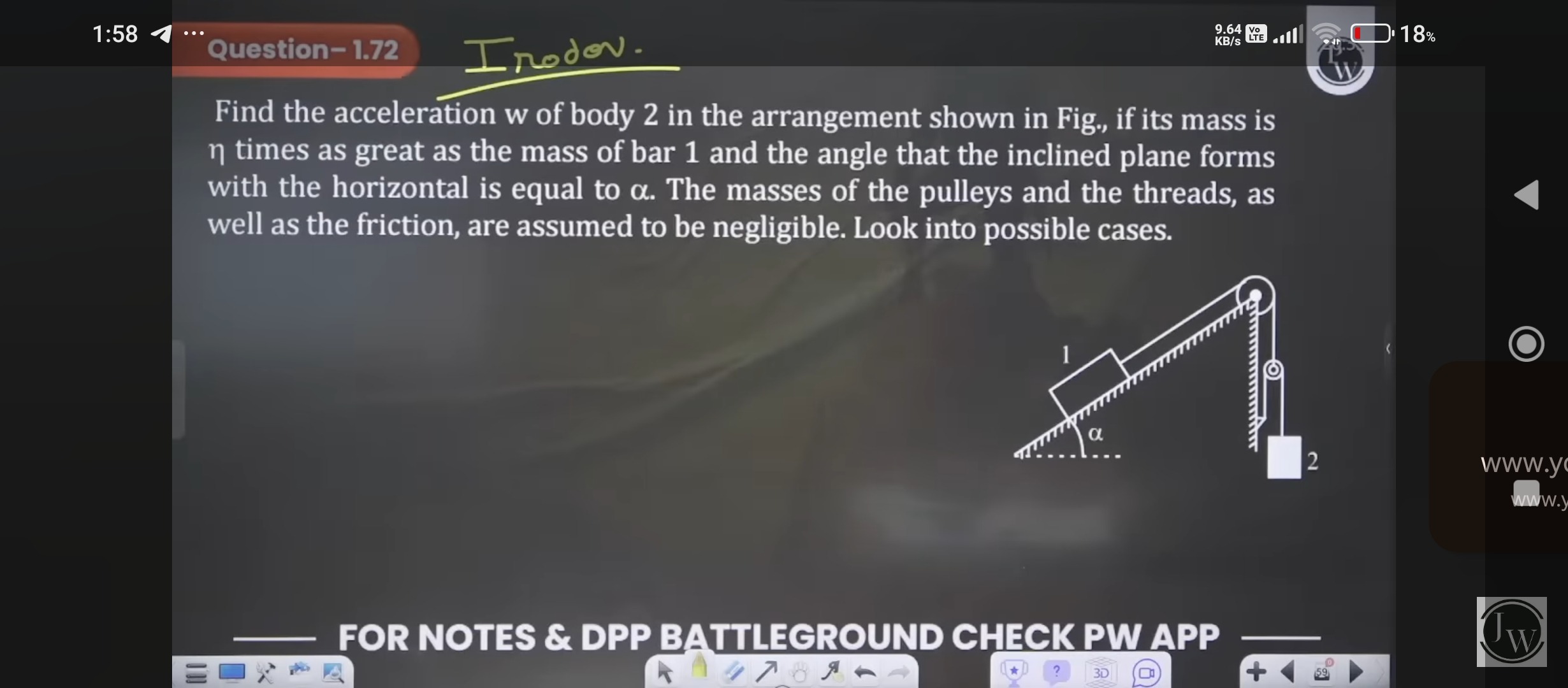Question
Question: Find the acceleration w of body 2 in the arrangement shown in Fig., if its mass is $\eta$ times as g...
Find the acceleration w of body 2 in the arrangement shown in Fig., if its mass is η times as great as the mass of bar 1 and the angle that the inclined plane forms with the horizontal is equal to α. The masses of the pulleys and the threads, as well as the friction, are assumed to be negligible. Look into possible cases.

w = g (η – sinα)/(η + 1)
Solution
Solution Explanation
-
Define masses and accelerations:
Let mass of block 1 = m (on the incline) and mass of block 2 = ηm (hanging).
Denote the acceleration (magnitude) along the string as a (with block 1 moving along the plane and block 2 moving vertically).
By the string’s inextensibility, block 1’s acceleration along the plane and block 2’s vertical acceleration have equal magnitude (but opposite directions). -
Write Newton’s second law for each body:
- For block 1 (on the incline):
The component of weight along the plane is m·g·sinα (directed down the plane).
Assuming acceleration a upward along the plane, we have
T – m·g·sinα = m·a (1)
- For block 2 (hanging vertically):
For block 2 accelerating downward, we write
ηm·g – T = ηm·a (2)
-
Solve for a:
From (1): T = m·a + m·g·sinα
Substitute T into (2):
ηm·g – (m·a + m·g·sinα) = ηm·a
Divide by m:
ηg – a – g·sinα = ηa
Thus,
ηg – g·sinα = a (1 + η)
Therefore,
a = g (η – sinα)/(η + 1) -
Interpretation (Possible Cases):
- If η > sinα, then a > 0, meaning block 2 accelerates downward with
w = g (η – sinα)/(η + 1).
- If η < sinα, then a < 0, so the assumed direction for a is reversed (block 2 accelerates upward with magnitude
w = g (sinα – η)/(η + 1)).
- If η = sinα, the system is in equilibrium.
Final Answer
The acceleration of block 2 is
w=η+1g(η−sinα)(with the understanding that if η<sinα the actual acceleration is upward, and if η>sinα it is downward).
